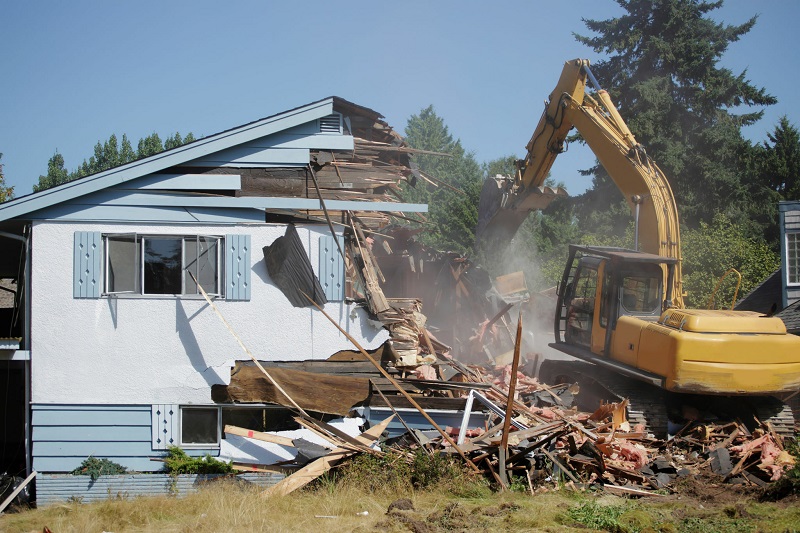
The Imperative of Safety in Demolition Projects
Demolition projects are inherently dangerous. They involve the controlled destruction of structures, often using heavy machinery and hazardous materials. This inherent risk makes safety a paramount concern in every phase of a demolition project, from planning and preparation to execution and completion.
Introduction
Every year, thousands of workers are injured or killed on demolition sites worldwide. In the United States alone, the Bureau of Labor Statistics reports an average of 11 fatalities and 5,300 non-fatal injuries in the construction industry each year, a significant portion of which occur during demolition project work. These statistics underscore the critical importance of prioritizing safety in demolition house projects.
Why Safety Matters in Demolition
Beyond the human cost, prioritizing safety in demolition projects also carries significant economic benefits. Accidents can lead to costly delays, project stoppages, and legal repercussions. Implementing robust safety protocols can help minimize these risks, ensuring projects are completed on time and within budget.
Key Safety Considerations in Demolition
Several key considerations must be addressed to ensure safety in demolition projects:
#. Pre-Demolition Planning:
Thorough planning is essential before even breaking ground. This includes:
- Site Assessment: Conducting a comprehensive site assessment to identify potential hazards, such as asbestos, lead paint, and unstable structures.
- Demolition Method Selection: Choosing the safest and most appropriate demolition method for the specific project, considering factors like structure size, materials, and surrounding environment.
- Permits and Regulations: Obtaining all necessary permits and adhering to local, state, and federal safety regulations.
- Emergency Response Plan: Developing a comprehensive emergency response plan to address potential accidents and injuries.
- Worker Training and Communication:
All workers involved in the demolition project must receive proper training on safety protocols, including:
- Personal protective equipment (PPE) use and maintenance.
- Hazard recognition and avoidance.
- Safe work practices for specific tasks.
- Emergency procedures.
Clear and consistent communication between all stakeholders, including demolition crews, supervisors, and inspectors, is also crucial for ensuring everyone is aware of safety risks and procedures.
#. Safe Work Practices
Implementing safe work practices during demolition is essential. This includes:
- Establishing exclusion zones around the demolition area to restrict unauthorized access.
- Properly securing and bracing the structure before demolition begins.
- Using appropriate equipment for each task and maintaining it in good working condition.
- Following safe lifting and rigging procedures.
- Controlling dust and debris to prevent inhalation hazards.
- Monitoring air quality for potential contaminants.
- Post-Demolition Safety
Safety considerations extend beyond the active demolition phase. Proper site cleanup and disposal of debris are crucial to prevent further hazards. Additionally, monitoring the site for potential structural stability concerns is essential in the days and weeks following demolition.
Tools and Technologies for Enhanced Safety
Several emerging tools and technologies are helping to improve safety in demolition projects, including:
- Remote-controlled demolition robots: These robots can perform dangerous tasks, such as removing hazardous materials or demolishing unstable structures, from a safe distance.
- Building information modeling (BIM): BIM software can create 3D models of the structure being demolished, allowing for virtual walkthroughs and simulations to identify potential hazards and plan the safest demolition approach.
- Drones: Drones equipped with cameras can be used to inspect structures for safety hazards before and during demolition.
- Wearable technology: Sensors and other wearable devices can monitor worker health and safety in real-time, alerting individuals to potential dangers.
Conclusion
Prioritizing safety in demolition projects is not just a moral imperative; it is also a sound economic decision. By implementing robust safety protocols, companies can protect their workers, avoid costly accidents, and ensure projects are completed successfully. As technology continues to evolve, new tools and methods will further enhance safety in the demolition industry. However, the fundamental principles of thorough planning, proper training, and safe work practices will remain the cornerstones of a successful and safe demolition project.
In conclusion, the demolition industry must prioritize safety at every level to protect workers, communities, and the environment. By embracing a proactive approach to safety, demolition companies can build a stronger, more sustainable future for the industry.
For more information available at https://www.exterioridea.com/
You May Also Like

Navigating Office Relocation: Choosing The Right Moving Services For Your Business
August 30, 2024
5 Pro Tips to Remember While Dealing with Exposed Aggregate
January 27, 2022

